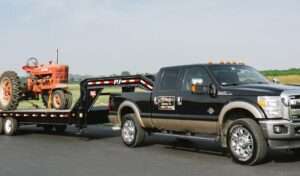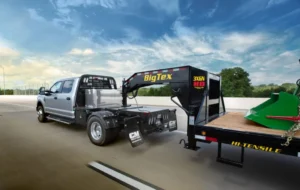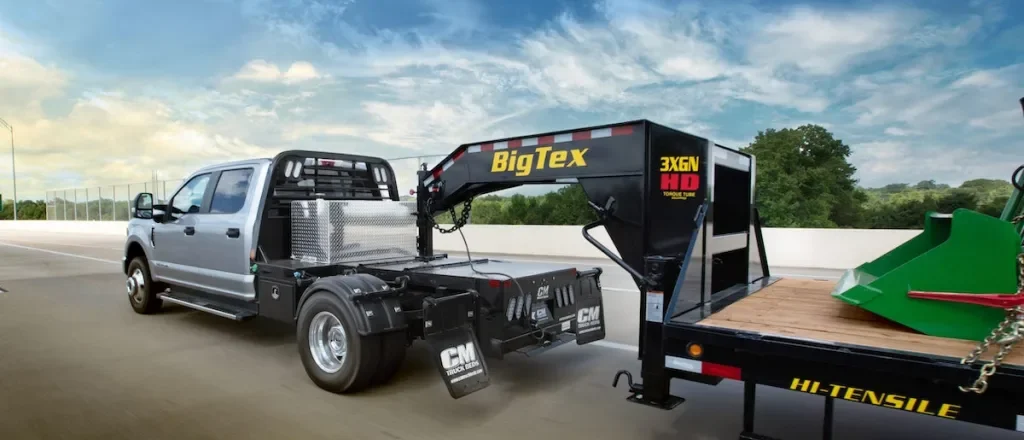Hot Shot Trucking Requirements: Everything You Need to Know
Are you interested in pursuing a career in hotshot trucking? Do you want to know what it takes to become a successful hot-shot trucker? In this article, we will provide you with a comprehensive guide on the hot shot trucking requirements. From licensing and equipment to insurance and load considerations, we will cover all the essential aspects you need to know before diving into this exciting industry.
Table of Contents
- Introduction
- Licensing and Permits
- Vehicle and Equipment Requirements
- Insurance Coverage
- Load Considerations
- Safety Regulations
- Financial Considerations
- Building a Clientele
- Establishing a Pricing Strategy
- Time Management and Logistics
- Maintaining a Strong Online Presence
- Networking and Building Relationships
- Tips for Success
- Challenges and Solutions
- Conclusion

Introduction
Hot shot trucking is a type of transportation service that involves the expedited delivery of time-sensitive goods and freight. Hot shot truckers typically operate with smaller trucks and trailers, allowing them to handle smaller loads and provide faster delivery times compared to traditional trucking companies. If you are considering entering this industry, it is important to understand the requirements and challenges associated with hot shot trucking.
Licensing and Permits
To operate a hot shot trucking business legally, you need to obtain the necessary licenses and permits. This includes obtaining a Commercial Driver’s License (CDL) if your vehicle’s Gross Vehicle Weight Rating (GVWR) exceeds 26,000 pounds. Additionally, you may need to acquire permits for interstate transportation or specialized hauls, depending on the nature of your business and the states you operate in.
Vehicle and Equipment Requirements
Hot shot truckers typically use pickup trucks or medium-duty trucks equipped with gooseneck or fifth-wheel trailers. It is important to ensure that your vehicle meets the weight and size requirements set by the Department of Transportation (DOT) and other regulatory authorities. Regular maintenance and inspections of your truck and trailer are essential to ensure safe and efficient operations.
Insurance Coverage
Obtaining proper insurance coverage is crucial for hotshot truckers. This includes liability insurance, cargo insurance, and physical damage coverage for your vehicle. Insurance requirements may vary depending on the type of freight you haul and the states you operate in. Working with an experienced insurance agent who specializes in trucking can help you navigate the complexities of insurance requirements.
Load Considerations
Hot shot trucking often involves transporting smaller and time-sensitive loads. As a hotshot trucker, it is important to carefully plan your loads and ensure that they are within your truck’s weight and size limits. Proper load securement is crucial for both safety and legal compliance. Additionally, understanding load boards and how to find and negotiate loads will help you optimize your business operations.
Safety Regulations
Compliance with safety regulations is paramount in hotshot trucking. Familiarize yourself with the regulations set by the DOT and other relevant authorities. This includes adhering to hours-of-service regulations, conducting pre-trip inspections, and maintaining accurate records. Implementing a comprehensive safety program will not only protect your business but also help build a reputation for reliability and professionalism.
Financial Considerations
Running a successful hotshot trucking business requires careful financial management. You need to consider expenses such as fuel, maintenance, insurance, permits, and taxes. Developing a realistic budget and tracking your income and expenses diligently will help you make informed business decisions and ensure profitability. It is also advisable to work with an accountant who specializes in trucking to maximize tax deductions and minimize financial risks.
Building a Clientele
Establishing a solid customer base is essential for the success of your hot-shot trucking business. Networking with freight brokers, shippers, and other industry professionals can help you find consistent and profitable loads. Providing exceptional service and delivering goods on time will earn you repeat business and positive referrals. Utilizing online platforms and load boards can also help you connect with potential clients and expand your reach.
Establishing a Pricing Strategy
Setting competitive yet profitable rates is a critical aspect of hot-shot trucking. Consider factors such as distance, load size, urgency, and market demand when determining your pricing strategy. Conduct market research to understand prevailing rates and adjust your prices accordingly. Offering value-added services and maintaining open communication with your clients can justify higher rates and foster long-term partnerships.
Time Management and Logistics
Efficient time management and logistics are vital in the hot-shot trucking industry. Proper route planning, load scheduling, and effective communication with clients and dispatchers will help you optimize your operations and minimize downtime. Utilizing technology such as GPS navigation systems and fleet management software can streamline your processes and improve overall efficiency.
Maintaining a Strong Online Presence
In today’s digital age, having a strong online presence is crucial for attracting clients and staying ahead of the competition. Create a professional website that showcases your services, experience, and contact information. Leverage social media platforms and online directories to increase your visibility and engage with potential customers. Regularly updating your online profiles with relevant content and testimonials will help build trust and credibility.
Networking and Building Relationships
Building strong relationships within the hot-shot trucking industry can open doors to new opportunities and partnerships. Attend industry events, join trucking associations, and actively participate in online forums and groups. Collaborating with other truckers and industry professionals can lead to shared resources, referrals, and valuable insights. Building a strong network can significantly contribute to your long-term success in the hot-shot trucking business.

Tips for Success
Here are some additional tips to help you succeed in hot shot trucking:
Maintain a positive attitude and strong work ethic.
Stay updated with industry trends and regulations.
Continuously invest in your professional development.
Communicate effectively with clients and partners.
Embrace technology to streamline operations.
Adapt to changing market conditions.
Prioritize safety and compliance.
Seek feedback and continuously improve your services.
Challenges and Solutions
While hot shot trucking can be a rewarding career, it also comes with its fair share of challenges. Some common challenges include fierce competition, fluctuating fuel prices, and unpredictable market demands. To overcome these challenges, it is important to stay flexible, diversify your services, and maintain strong relationships with clients and industry partners. Embracing innovation and continuously refining your business strategies will help you navigate through obstacles and thrive in this competitive industry.
Conclusion
Hot shot trucking offers an exciting opportunity for individuals looking for a fast-paced and independent career in the transportation industry. By understanding and meeting the various requirements discussed in this article, you can establish a successful hot shot trucking business. Remember to prioritize safety, customer satisfaction, and continuous improvement to stay ahead of the competition and achieve long-term success.
FAQs
Q1. How much does it cost to start a hotshot trucking business?
Starting costs for a hot shot trucking business can vary depending on factors such as the type of equipment, insurance coverage, permits, and marketing expenses. On average, you can expect to invest anywhere between $10,000 to $50,000 or more to get your business up and running.
Q2. Do I need a CDL for hot shot trucking?
If your truck’s Gross Vehicle Weight Rating (GVWR) exceeds 26,000 pounds, you will typically need a Commercial Driver’s License (CDL) to operate in hot shot trucking. However, specific requirements may vary by state, so it’s essential to check with your local Department of Motor Vehicles (DMV).
Q3. Can I operate a hot shot trucking business as an owner-operator?
Yes, many hotshot trucking businesses are operated by owner-operators. Being an owner-operator allows you to have full control over your business, including the choice of loads, scheduling, and pricing. However, it also means taking on additional responsibilities such as maintenance, bookkeeping, and marketing.
Q4. How do I find loads for my hot shot trucking business?
There are several ways to find loads for your hot shot trucking business. You can establish relationships with freight brokers, join online load boards, leverage dispatching services, or even directly contact shippers and manufacturers. It is advisable to use a combination of these methods to ensure a consistent flow of loads.
Q5. How much can I earn as a hotshot trucker?
The earnings of hot shot truckers can vary depending on various factors such as the number of loads, distance traveled, rates charged, and operating expenses. On average, hot shot truckers can earn anywhere from $40,000 to $100,000 or more per year. However, it’s important to note that individual earnings can vary significantly based on business efficiency and market conditions.

